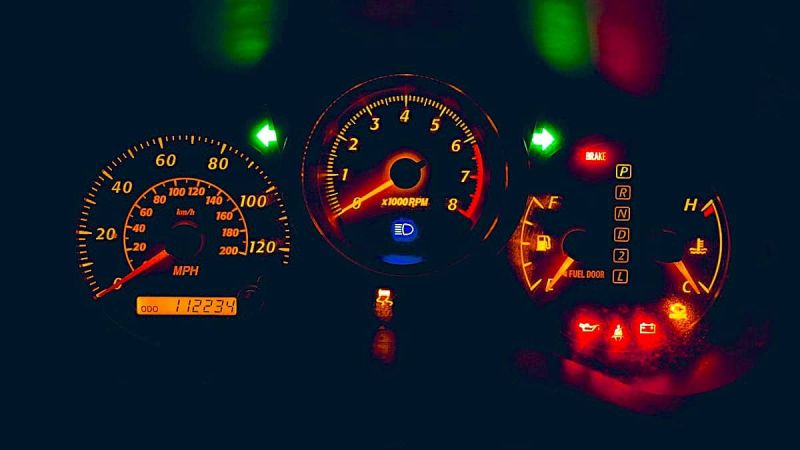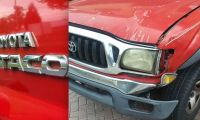The Dash Warning Light You Should Never Ignore
Your brakes are one of the most important features of your car’s safety and operating system. If it fails, a collision is pretty much guaranteed. Which is why it is so important to never ignore your brake warning light when it comes on, and to give it the attention it demands---immediately.
Possible Reasons Why A Brake Warning Light Comes On
When your car's brake warning light comes on, it is telling you that something is not right with your braking system and/or the sensor(s) involved. While recently manufactured cars with an automatic braking system (ABS) usually have two warning lights---one that lights up in the presence of mechanical problems, and the other for other system-related malfunctions---older used cars may be fitted with only one warning light that pretty much covers anything and everything related to the braking system.
For example:
• A burnt-out or failed brake globe (the external covering over the brake lights and its bulb)
• Wore out brake pads
• An ABS sensor malfunction
• Low brake fluid possibly due to a leak
• A park sensor that has either failed or has malfunctioned
Simple Checks When Your Brake Warning Light Comes On
Before panicking and making an appointment with a vehicle service department or pulling into a chain automotive service center, take the time to perform some simple checks to see if you can determine the cause of the problem.
Commonly recommended checks include:
1. Checking your parking brake---sometimes the sensor for detecting an engaged parking break may signal your brake warning light to come on if the parking brake is only slightly engaged. Try engaging and then disengaging the parking break to see if this remedies the situation.
2. Checking the brake fluid level---If the brake fluid is low, it will turn on the brake warning light. If the brake pads are wearing down, the fluid in the reservoir is displaced taking up some of that extra lost pad space and thereby drops below the fill line in the brake fluid reservoir where a sensor monitors the level of brake fluid in the reservoir. Simply adding more brake fluid to the reservoir will usually fix the problem.
3. Check for leaks---Your brake fluid could also be low due to a fluid leak either at the brake fluid reservoir or somewhere along the brake line system. It is not uncommon for a service center tech to improperly replace the brake fluid reservoir cap resulting in a loss of braking pressure and brake fluid leakage. Check the cap to ensure it is secured and look for any signs of leakage on the body of the reservoir. You should also check under your car for any large puddles of fluid. If you see one, now is the time to have the leak assessed and fixed by a trusted mechanic.
4. Check your vehicle operators manual---In it you should find some explanation of the brake warning light(s) such as a brake pad wear sensor warning or separate ABS warning. While generally not an immediate problem, it is one that needs to be addressed very soon. These types of sensors will alert the driver when the brake pads are getting close to being worn too far down, or the ABS system is failing respectively.
5. Check the brake lights globe to see if it is broken or damaged---Brake light bulbs that are damaged or burnt out may cause your brake warning light to come on and stay on. Replacing your bulbs can be a DIY fix, but be forewarned that some brake light components can be complicated and will require some instruction. Look for a YouTube video on your make and model for the particulars, or consult an auto-repair manual covering your vehicle and year.
A Warning Light Idiosyncrasy Observed in Some Toyota Tacoma Models
As a demonstration of a brake warning light diagnosis and fix, here is an informative video dealing with a Toyota Tacoma that in spite of being filled up to the recommended fill line with brake fluid in its reservoir, it actually requires going a little above the fill line to make the sensor operate correctly.
Toyota Tacoma Brake Warning Light On
And finally…
For more about car maintenance, repair and care be sure to check out these useful articles that discusses transmission problems, changing your transmission fluid and filter, and how to fix a flat tire with the best type of flat tire sealant kit available today.
COMING UP NEXT: Used Car Dealer Scam With Superglue and Drywall Screws
Timothy Boyer is Torque News automotive reporter based in Cincinnati. Experienced with early car restorations, he regularly restores older vehicles with engine modifications for improved performance. Follow Tim on Twitter at @TimBoyerWrites for daily Tesla and electric vehicle news.
Photo by Alex McCarthy on Unsplash












